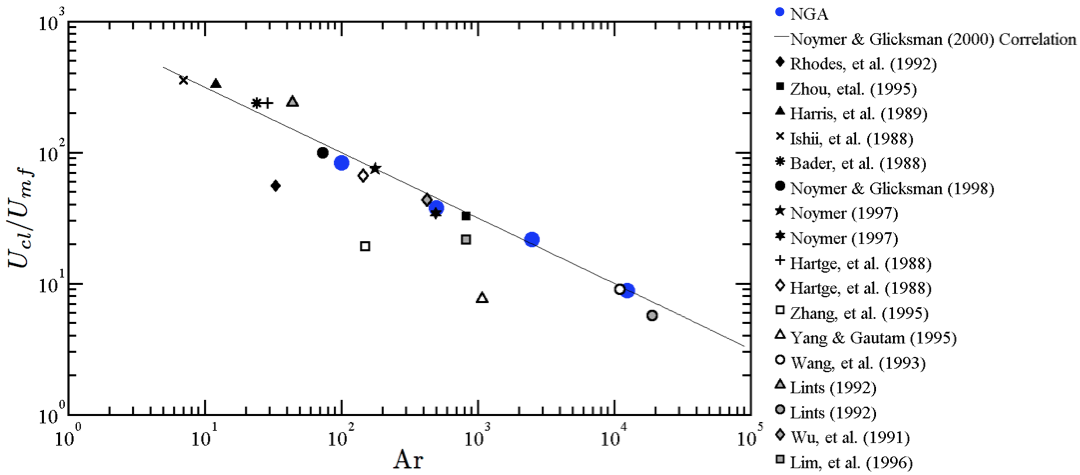

A recurring challenge among the variety of existing biomass-to-biofuel conversion technologies is the need to ensure optimal and homogeneous contact between the various phases involved. One example can be found in the catalytic upgrading of bio-oil vapors , a bi-phasic process critical in pyrolysis-based conversion , typically performed in circulating fluidized bed (CFB) reactors. While the upgrading process is expected to strongly depend on the contact time between raw gas and catalysts , and on catalysts deactivation over time , the formulation of robust design rules from an empirical standpoint alone remains difficult , due to the wide range of granular flow regimes coexisting within the reactor , from near close-packing at the bottom of the reactor to more dilute conditions in the riser. The issue is amplified by the highly unsteady and turbulent nature of gas-solid flows. In particular , clusters of particles are known to form in risers , which can significantly decrease the overall catalytic activity in the reactor. In this work , a Lagrangian particle tracking tool recently developed in the large eddy simulation (LES) framework of NGA is used to quantify the role of cluster dynamics on biomass pyrolysis vapor catalytic upgrading in risers. This numerical framework has been extensively validated for a range of particle-laden flows , in particular , cluster fall velocities in risers of CFB reactors have been shown to match experimental correlations (Fig.1). Two configurations are investigated and compared: an homogeneous system for which the catalyst-pyrolysis vapor contact time is statistically uniform , and a pseudo-two-dimensional riser , such as shown in Fig.2 , combining all granular flow regimes of interest.
Figure 1: Mean cluster fall velocity normalized by the minimum fluidization velocity as a function of Archimedes number , a non-dimensional number that characterizes the flow inertia due to density differences between the gas and solid phases. The solid line indicates a correlation developed from a range of experimental studies by Noymer & Glicksman (2000).
Figure 2: Pseudo two-dimensional simulation of a riser showing gas volume fraction (left) and gas velocity magnitude (right). Particles are injected at the bottom where the gas inlet is located.
Presenter(s)
Language
Pricing
Individuals
| AIChE Member Credits | 0.5 |
| AIChE Pro Members | $15.00 |
| Fuels and Petrochemicals Division Members | Free |
| AIChE Graduate Student Members | Free |
| AIChE Undergraduate Student Members | Free |
| AIChE Explorer Members | $25.00 |
| Non-Members | $25.00 |


